Stop Surplus Plutonium Waste from Coming to WIPP!
What’s Next?
DEADLINE – MONDAY, February 1, 2021
Stop Surplus Plutonium Waste from Coming to WIPP
The time is now!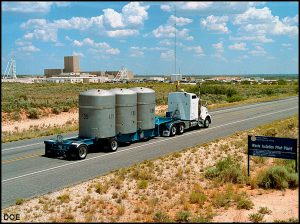
NOW is the time for New Mexicans to be heard. The Department of Energy (DOE) wants to dispose 34 metric tons of so-called “surplus plutonium” at the Waste Isolation Pilot Plant (WIPP) in New Mexico. Accepting this pure or diluted, plutonium would violate the WIPP operating end date, as well as waste type and waste volume limitations. It would also increase transportation and transportation risks.
We can stop DOE from sending this new waste to WIPP and turning our state into the nation’s nuclear dumping ground. We have a window of opportunity right now and your actions are critical to protecting our property, health and lives.
What’s this opportunity?
We are in the first stage of the public process under the National Environmental Policy Act (NEPA) which requires an Environmental Impact Statement (EIS) to be prepared to evaluate alternatives for the “disposition of plutonium surplus to the defense needs of the United States.” Right now the public can comment on what should be covered in this EIS, if the alternatives in the EIS are adequate, and if the public process so far has been adequate, fair & inclusive. These are called scoping comments. However, this comment period ends on Monday, February 1, 2021.
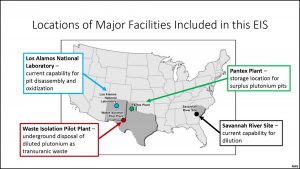 Click on the map to see an animated video about DOE’s broken promises
Click on the map to see an animated video about DOE’s broken promises
DOE’s preferred alternative is the “dilute & dispose” alternative that would transport 34 metric tons of plutonium back and forth across the country before disposing it in WIPP. Even DOE’s “no action” alternative includes dilution of 7.1 MT of plutonium and disposal in WIPP.
Transportation risks
DOE’s plans would put people in New Mexico and many other states at risk, increasing accident and plutonium release risks. Such a release would be devastating. Much of this surplus plutonium is stored in Texas. It must be transported first to Los Alamos to be oxidized and then to South Carolina to be diluted before being shipped back to WIPP in New Mexico.
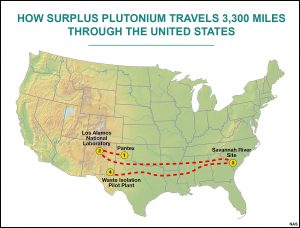 Click on the map to see an animated video on transportation risks & more
Click on the map to see an animated video on transportation risks & more
Even during normal operations, increased transportation will lead to increased exposures to workers and the public. Radiation is not fully contained by the shipping casks, irradiating anyone close by—especially the WIPP drivers and employees at truck & rest stops, who are irradiated over and over again.
Some points you may want to make
in your comments about the EIS
- There should be an alternative that does not end up with any of this waste coming to WIPP.
- Risk assessments and effects studies need to be done for each alternative both for the sites and especially along the shipping routes.
- The EIS must explain why DOE wants to break the social contract agreements it made with New Mexico that included other disposal sites.
What Can I do?
- Send written comments to DOE by February 1, 2021 by email to: SPDP-EIS@nnsa.doe.gov
Click here for a short & simple sample comment email
Click here for a longer, more detailed sample comment email
Click here for a WIPP timeline and summary of WIPP history
- Tell your senators, representatives, and the Governor to oppose DOE’s proposal to bring 34 metric tons or more of diluted surplus plutonium to WIPP.
- Also ask for a more inclusive public process, especially for those who need information in Spanish or other languages, and for those who have poor or no online access.
- Governor:
Michelle Lujan-Grisham
- Senators:
Martin Heinrich
Ben Ray Lujan
- Representatives:
Teresa Leger-Fernandez
Yvette Herrell
Deb Haaland
Donate by credit card through our GoFundMe page
Donate by check to
Southwest Research and Information Center
P.O. Box 4524
Albuquerque, New Mexico 87196-4524
Make the check out to SRIC and put Stop Forever WIPP in the memo line
Stop Forever WIPP is a coalition opposing the expansion of WIPP and is a project of SRIC, a nonprofit 501(c)(3) organization. All donations are tax deductible.
Tags: STOP FOREVER WIPP


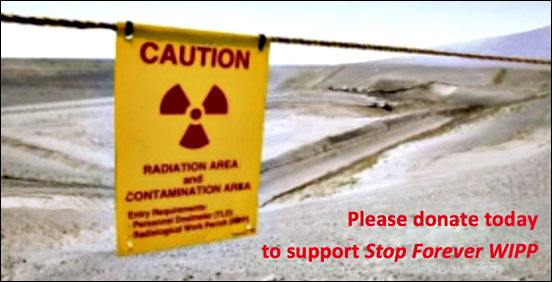

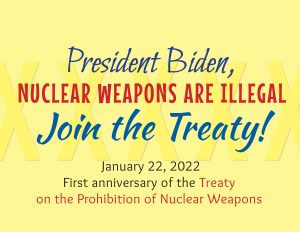
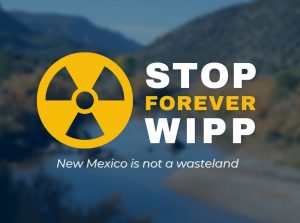






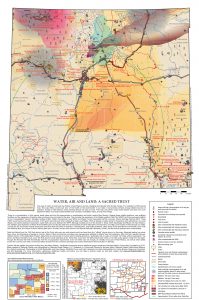

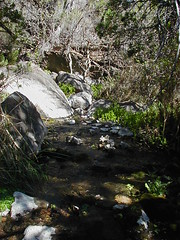

Comments
No comments so far.